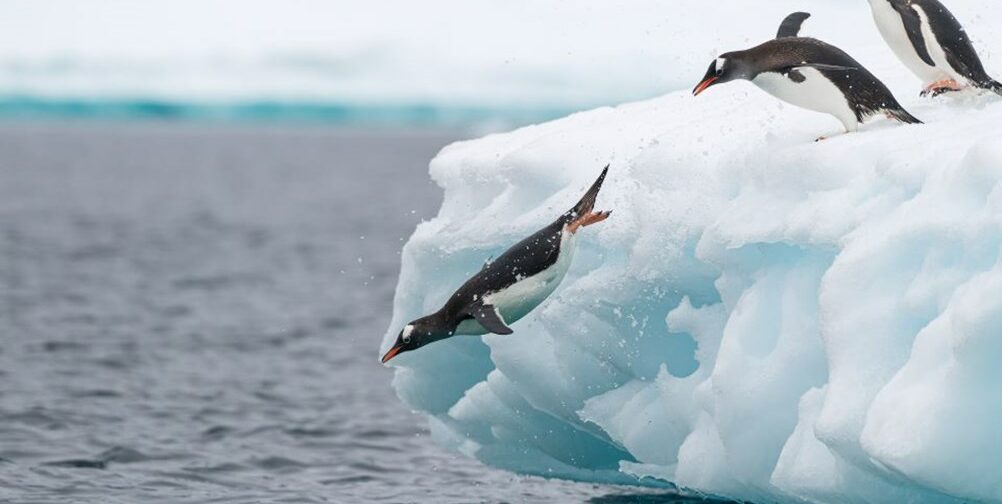From the CO2Science Archive: Over the past several years, many researchers have examined the spatial extent of sea ice around Antarctica, consistently reporting an increasing trend (see, for example, the CO2Science reviews on the previously published works of Yuan and Martinson, 2000, Watkins and Simmonds, 2000, Hanna, 2001, Zwally et al., 2002, Vyas et al., 2003, Cavalieri et al., 2003, Liu et al., 2004, Parkinson, 2004, Comiso and Nishio, 2008, Cavalieri and Parkinson, 2008, Turner et al., 2009, Pezza et al., 2012, Reid et al., 2013, Reid et al., 2015, Simmonds, 2015, He et al., 2016 and Comiso et al., 2017). The latest study to confirm this ongoing expanse comes from the South American research team of De Santis et al. (2017). Using a sea ice index from the National Snow and Ice Data Center (Fetterer et al., 2002), derived from passive microwave satellite data, the three scientists assessed trends in monthly sea ice extent for the Southern Ocean and five sub-regions over the period 1979 to 2016. Then, they compared their findings with those of other researchers, who calculated trends using similar data and methods, but over shorter time periods.
Paper reviewed: De Santis, A., Maier, E., Gomez, R and Gonzalez, I. 2017. Antarctica, 1979-2016 sea ice extent: total versus regional trends, anomalies, and correlation with climatological variables. International Journal of Remote Sensing 38: 7566-7584.
Results of the analysis are presented in the table below, where it is seen that the positive trend (i.e., expansion) in sea ice extent across the whole of the Southern Ocean has been increasing with time -- from approximately 1% per decade using data over the period 1979-2006 to 1.5 and 1.6 % per decade using data over the periods 1979-2010 and 1979-2016, respectively. Regionally, four of the five Southern Ocean regions show positive sea ice trends. The only negative trend witnessed is in the Bellingshausen-Amundsen Seas, where trends have become less negative in recent years due to advancements in sea ice extent occurring there.

Table 1. Trends in sea ice extent for the Southern Ocean and five regions of the Southern Ocean for the period 1979-2016 (this study) and for shorter periods (other studies, as listed below). Source: De Santis et al. (2017).
Correlations between sea ice extent and meteorological variables (air temperature, pressure and wind) led De Santis et al. to conclude that the observed increase in sea ice extent is “mostly due to the thermodynamic effect of winds,” which “push and crack the sea ice exposing liquid water to freeze, and thus causing the expansion of the sea ice area by transportation of ice blocks due to the air friction and exposing open water to freeze.” Additionally, they say that the winds “transport colder airflow from the high latitudes, generating a feedback loop system [of] ‘expands-freezes-expands’ which inhibits the heat flow from the ocean to the atmosphere.”
Whatever the true cause or causes, one thing is certain: all of the climate models have failed to predict the observed increase in Southern Hemisphere sea ice extent. Rather, as reported in the most recent report of the Intergovernmental Panel on Climate Change (IPCC), CO2-induced global warming is supposed to reduce its extent by an average of between 16 and 67 percent in the summer and 8 to 30 percent in the winter by the end of the century (IPCC, 2013). Clearly, therefore, something must be fundamentally wrong with the climate models, for their predictions to be so far off from the observed sea ice trends.



"something must be fundamentally wrong" (with the models).
You mean something fundamental, like building into the model the theory that > CO2 from burning fossil fuels causes increased temperatures?
@Mark Main, no, something fundamental like the behaviour of water around the Antarctic. I was present at a meeting where a physicist described one effect he'd noticed that caused more ice, and which was not accounted for in existing models. It has been about 10 years and I've forgotten the details. It was something to do with the difference between salt water in the body of the ocean and fresh water floating on top of it and fresh water being easier to freeze. The point was that the models had basically assumed that all water was the same.